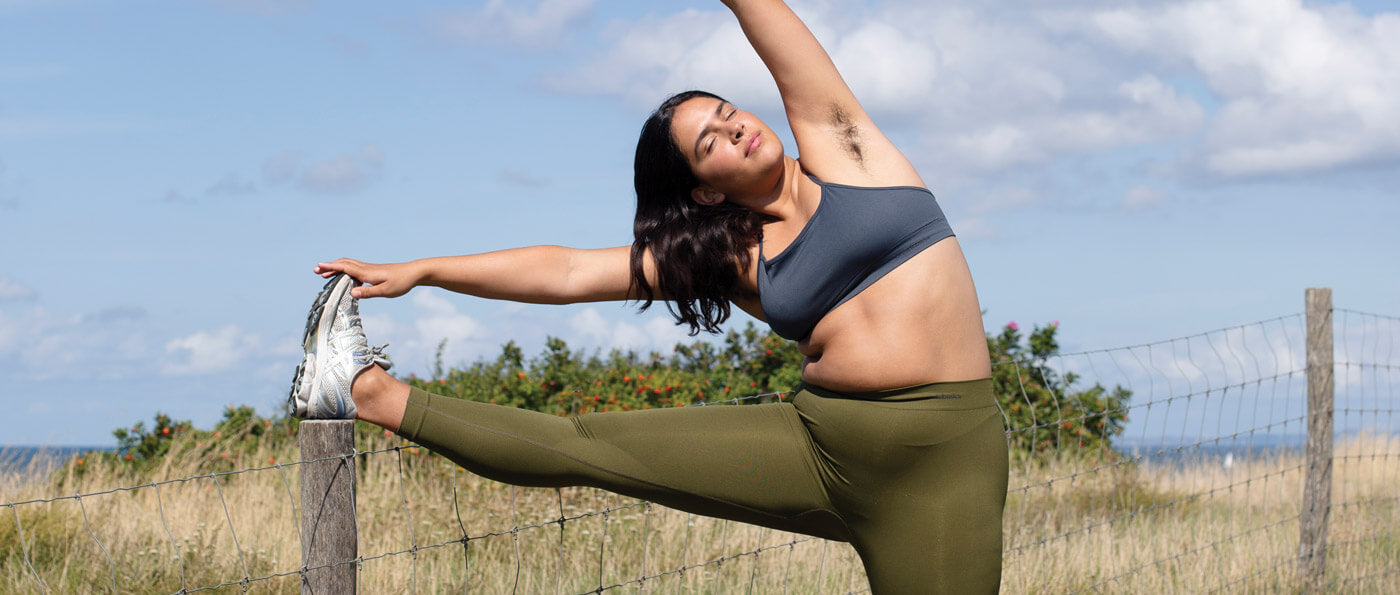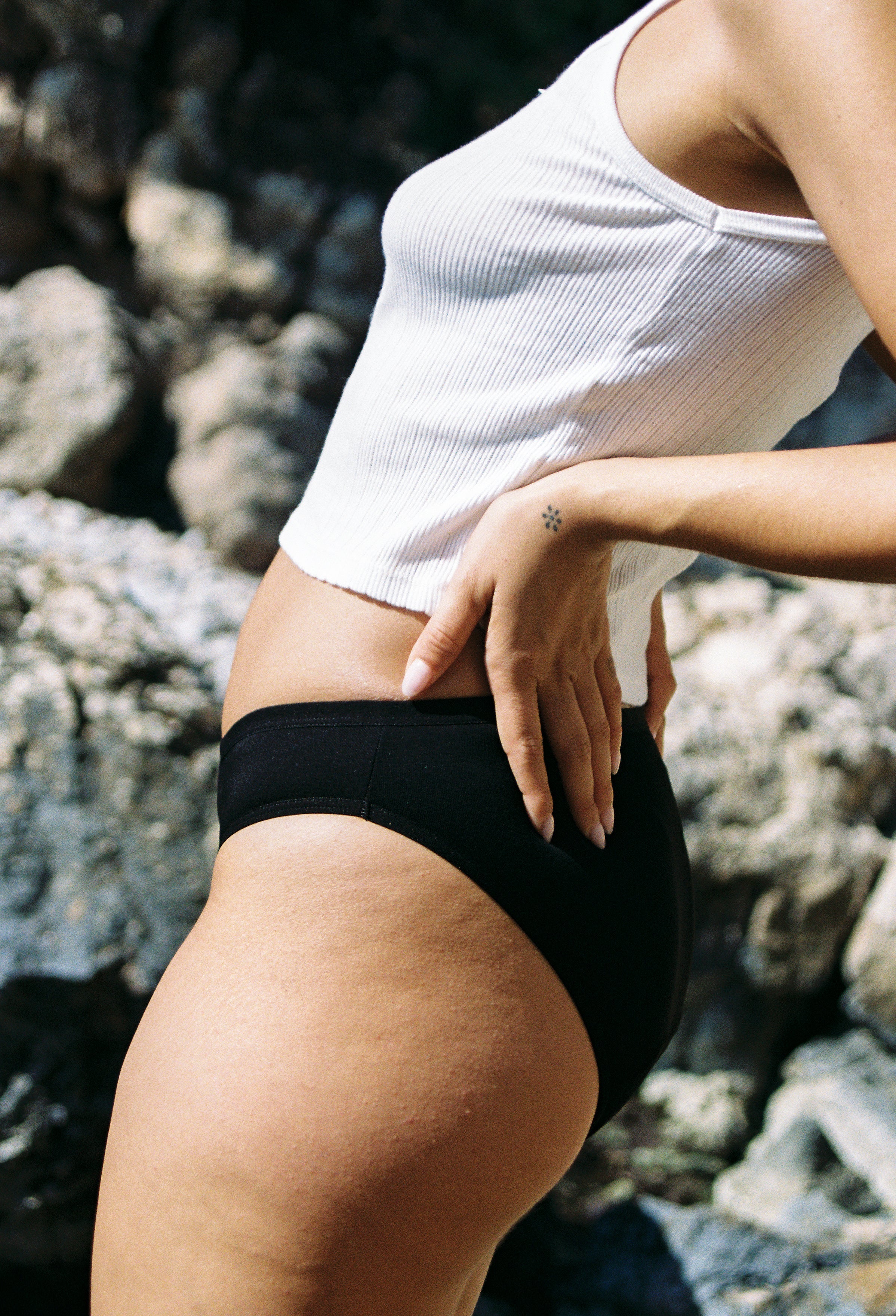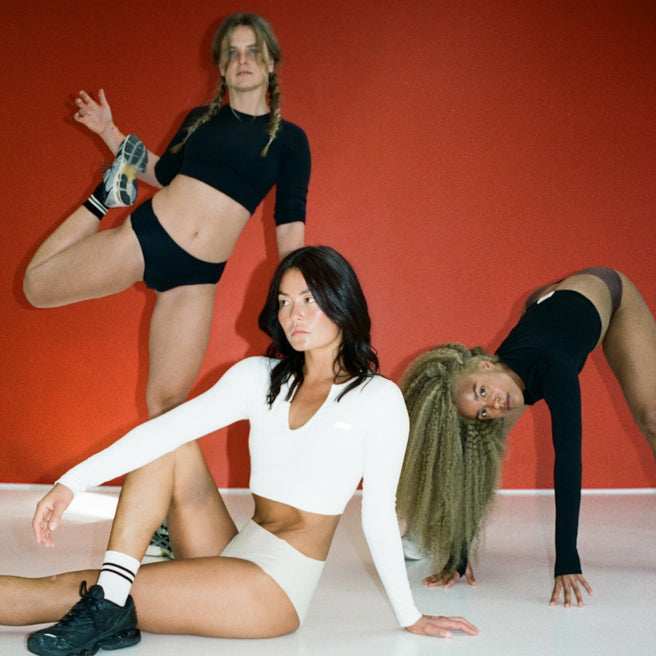We are far from traditional, and we know period pain can be exhausting, annoying, and even debilitating at times. Perhaps you might be tired of taking medicine or grabbing a hot water bottle every time you get your period? If so, trying to exercise can really help. We know that when you’re on your cycle, progesterone and estrogen are at their lowest, which can cause you to feel tired and have less energy. We searched and found the best three yoga poses to help reduce your pain, loosen up your body, and provide other benefits like improving posture and relieving depression symptoms.
The best bit is that they don’t require too much effort, and they don’t take up much of your time.
Why does exercise help with period cramps?
Before getting to the poses, let us explain why exercise helps. Being consistent with activity is beneficial for your mind and body in general. When you exercise, the body releases endorphins, which can lead to something called an ‘endorphin high.’ This helps to elevate mood and can make you feel better. Endorphins react with the opiate receptors in your brain, reducing the pain you feel. They can also regulate appetite, enhance your immune response, and release sex hormones. When our endorphins are high, we feel less pain and have fewer side effects from stress. The best part is that you don’t have to push it to the limit, and these responses can happen with light to moderate regular exercise.
The Bound Angle Pose or Baddha Konasana
How to do it: start by sitting in an upright position, chest lifted, and with your legs extended out in front of you, and take a deep breath in. Begin to exhale and bring your legs towards the body, bending your knees and allowing them to fall ooutwards to the sides. With your feet meeting in the middle, use your hands to open the soles of your feet as if you were opening a book. Take a deep breath in as you draw your shoulder blades against your spine and clasp your ankles. You can do this pose for up to 5 minutes.
What it does: this yoga pose helps to open the hips, engage the core, improves flexibility in the lower back, thighs, groin, and ankles, and it also helps with posture. It will help to release the tension held in and around our abdominal area, offering relief from stomach aches, cramping, and lower back pain.
Having trouble: modifications can be made by moving the feet away from your groin, putting supports or pillows under the knees, sitting with your back against the wall, or leaning forward whilst keeping a straight spine.
The Head to Knee Pose or Janu Sirsasana
How to do it: star by sitting in an upright position with your legs out in front of you, begin bending one knee, then place your foot on the inner thigh of the opposite leg. Take a deep breath and raise your arms over your head. As you begin to exhale slowly, start bending forward over your straightened leg and clasp your extended foot with your hands. Slightly twist your rib cage towards your straightened leg and breathe in and out as you hold the pose for up to 1 minute. Repeat on the other side.
What it does: this yoga pose stretches your back muscles, particularly your lower back, thighs, and groin, to relieve tension in those areas. It improves flexibility and is helpful in recovery after exercise. It also improves posture and fights against the effects of prolonged sitting.
Having trouble: modifications can be made by using a support under the knee or pelvis. You can also use a strap around the ball of your foot to help you stretch without over extending; just be sure to keep your spine straight.
Reclining Bound Angle Pose or Supta Baddha Konasana
How to do it: start by sitting on the floor with a folded blanket, pillow, or bolster underneath your lower back. Take a deep breath in and as you exhale, tuck your chin into your chest and slowly roll back onto your support of choice. Begin bending your knees to allow them to gently fall open to the sides, just like the bound angle pose. Once the soles of your feet come together, begin pulling your heels closer to your groin until you feel comfortable. Your arms can rest next to the sides of your body and your palms should be facing the sky. Breathe deeply and close your eyes as you hold the pose for up to 10 minutes.
What it does: this yoga pose helps to improve circulation, stimulates abdominal organs, and relieves symptoms of depression, stress, or period pain. It is a restorative pose that will also improve flexibility in the knees, inner thighs, and groin.
Having trouble: modifications can be made by placing supports under the knees, a support under the pelvis, or increasing the height of your back support.
More yoga poses for period pain
Adding yoga poses for period pain into your routine can be a game-changer. Beyond the three poses we've mentioned, exploring other gentle yoga exercises can further alleviate discomfort.
For instance, the Child's Pose, or Balasana, is a simple yet effective pose. To do this, kneel on the floor, sitting on your heels with your knees hip-width apart. Lean forward, resting your forehead on the ground and stretching your arms out in front. This pose helps to relax the back and abdominal muscles, providing relief from cramps.
The Cat-Cow Stretch, a fluid movement between two poses, is another excellent choice among stretches for period cramps. Start on your hands and knees, ensuring your wrists are directly beneath your shoulders and your knees beneath your hips.
As you inhale, arch your back downwards, lifting your head and tailbone towards the ceiling (Cow Pose). As you exhale, round your spine towards the ceiling, tucking your chin to your chest (Cat Pose). This movement helps to gently massage the abdominal organs, easing period discomfort.
What other forms of exercise should I do during my period?
Any form of light or lower intensity forms of exercise is perfectly fine to do during your menstrual cycle. Getting outside and breathing the fresh air with a 30 min walk, swimming, or cycling are great low impact exercises. And, if you’re not a fan of cardio exercise, you can also do light strength training or power exercises, like squats, lunges, curls, or overhead presses.
Depending on how severe your period symptoms are, you might want to avoid heavy lifting or other intense cardio exercises. Most people will be able to exercise normally during their period, so make sure to listen to your body first and foremost.
Breathing techniques for cramp relief
Integrating mindful breathing with these poses enhances their effectiveness. Deep, controlled breaths can help in managing pain and reducing stress, which often exacerbates period symptoms. When practicing these yoga poses to help period cramps, focus on breathing deeply and rhythmically.
This practice not only aids in physical relief but also in mental relaxation, contributing to overall well-being during your menstrual cycle.
Customizing yoga for your period
These yoga poses for period pain and wonderful techniques, along with the three described earlier, form a comprehensive approach to managing period discomfort. Remember, the key is to listen to your body and adjust the poses as needed. With regular practice, yoga can become a valuable tool in your arsenal against period pain.
When should you go to the doctor about period pain?
For some people, period pain can feel overwhelming, and you may have tried medication, exercise, topical ointments, or diets without ever experiencing any relief. When your period cramps begin to, or are, interfering with your everyday life you may need to be evaluated by a doctor. Conditions like Polycystic Ovary Syndrome (PCOS), endometriosis, or fibroids can all cause period pain and symptoms to be worse than normal. Talking to a doctor can enable you to get the help you need so you can live your life to the fullest.






